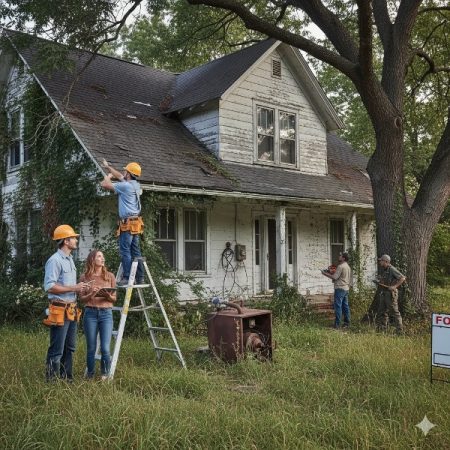Owning an apartment or unit comes with more than just mortgage payments and council rates. One of the biggest ongoing expenses that catches many property owners off guard is owners corporation fees. These quarterly charges can range anywhere from a few hundred to several thousand dollars, and understanding what drives these costs can save you both money and headaches down the track.
The thing is, most people don’t really grasp what they’re paying for until something goes wrong. Maybe the lift breaks down, or there’s a water leak that affects multiple units, or the building needs major roof repairs. Suddenly, those quarterly fees make a lot more sense – but by then, it’s often too late to make informed decisions about your investment.
Breaking Down the Fee Structure
Owners corporation fees aren’t just pulled out of thin air. They’re calculated based on your unit entitlement, which is essentially your share of the common property. If you own a larger apartment or one with better views, you’ll typically pay more than someone with a smaller unit on a lower floor.
The fees themselves cover two main buckets: the administrative fund and the maintenance fund. The administrative fund handles day-to-day running costs like insurance, utility bills for common areas, cleaning, and management fees. The maintenance fund is for repairs and upkeep of shared facilities – things like painting, carpet replacement, garden maintenance, and equipment servicing.
Here’s where it gets tricky though. Some buildings also levy special assessments for major works. These can be substantial – we’re talking tens of thousands of dollars per unit for things like facade repairs, lift replacements, or fire safety upgrades. The problem is that many owners don’t see these coming because they haven’t been properly planned for in the budget.
What Influences Your Fees
The age and condition of your building plays a huge role in determining fees. Newer buildings typically have lower maintenance costs initially, but don’t be fooled – those costs will climb as the building ages and warranty periods expire. Older buildings might have higher ongoing costs but fewer nasty surprises if they’ve been well-maintained.
Building amenities also drive up costs significantly. That rooftop garden, swimming pool, or gym might look great in the sales brochure, but they all need ongoing maintenance, insurance, and eventually replacement. A building with extensive facilities can easily have fees two or three times higher than a simpler block of units.
The quality of management makes a massive difference too. Professional owners corporation managers who stay on top of maintenance issues, negotiate good supplier contracts, and plan ahead for major works can actually save money in the long run. When evaluating management options, property owners might want to consider services similar to Above OCM or other experienced management companies that focus on transparent communication and proactive maintenance planning.
Red Flags in Fee Structures
Watch out for buildings where the fees seem unusually low compared to similar properties. This often means the owners corporation is deferring maintenance or hasn’t properly budgeted for upcoming major works. It’s like buying a cheap car – the savings upfront usually cost you more later.
Another warning sign is frequent special levies. While occasional special assessments are normal for major works, buildings that constantly hit owners with unexpected bills usually have poor financial planning or management issues.
Inconsistent fee increases can also signal problems. Fees should generally increase gradually with inflation and the building’s aging, but dramatic spikes often indicate that previous committees have been avoiding necessary maintenance or there are management inefficiencies.
Smart Budgeting Strategies
When buying an apartment, don’t just look at the current fees – ask for historical data going back at least five years. This gives you a sense of the trend and helps you budget for future increases. Also request to see the maintenance fund balance and any upcoming major works plans.
Set aside additional money beyond your quarterly fees for special levies. A good rule of thumb is to budget an extra 20-30% on top of your regular fees for unexpected assessments. This might seem excessive, but major building works are inevitable, and being prepared means you won’t be scrambling to find tens of thousands of dollars at short notice.
Consider the building’s age when budgeting. Buildings typically need major works every 15-25 years – things like roof replacement, facade work, or lift modernization. If you’re buying into a building approaching this age bracket, start saving early.
Getting Value for Your Money
The cheapest management isn’t always the best value. Look for managers who provide detailed financial reports, maintain clear communication with owners, and have a track record of planning ahead for major works. Good management can actually reduce your long-term costs by preventing small issues from becoming expensive problems.
Don’t be afraid to get involved in your owners corporation. Attending meetings and staying informed about building issues helps ensure your fees are being used effectively. Active, engaged owners corporations tend to make better financial decisions and avoid costly mistakes.
Understanding owners corporation fees isn’t just about knowing where your money goes – it’s about protecting your investment. Property owners who take the time to understand these costs, budget appropriately, and stay engaged with their building’s management typically fare much better financially than those who simply pay the bills and hope for the best. The key is treating your apartment ownership as an active investment rather than a passive one. With the right knowledge and preparation, those quarterly fees become a manageable part of property ownership rather than an unwelcome surprise.






